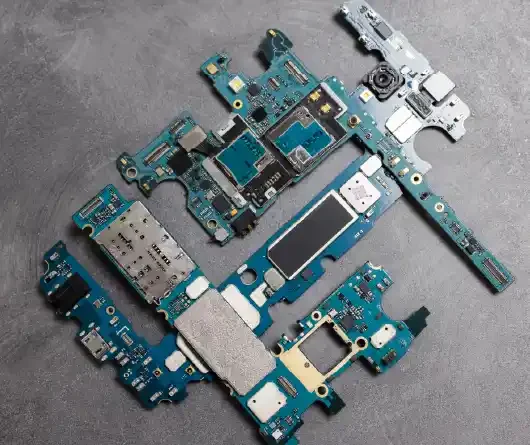Call Us:
Sales (India): +91 91488 14400
Sales (USA): +1 267 703 5359
HR: +91 80250 34302
The Silent Threat: Obsolete Hardware
- Home
- The Silent Threat: Obsolete Hardware
In the ever-evolving realm of cybersecurity, the focus often falls on advanced threats, sophisticated malware, and innovative defence mechanisms. However, there is a silent adversary that often goes unnoticed—obsolete hardware. The misconception that outdated devices pose minimal risks can lead to complacency, leaving organizations vulnerable to potential cyber threats. In this blog, we will explore the cybersecurity implications of obsolete hardware, backed by factual data and real-world examples.

The Pervasive Nature of Obsolete Hardware
The Overlooked Security Concerns
Obsolete hardware, including outdated servers, routers, and end-user devices, might seem innocuous, but they can harbor serious security concerns. These devices often run outdated operating systems and lack the latest security patches, making them attractive targets for cybercriminals looking for vulnerabilities to exploit.
The Prevalence of Legacy Systems
Many organizations still rely on legacy systems due to budget constraints or the perceived difficulty of migrating to newer technologies. A report by Spiceworks found that as of 2021, 79% of businesses were using at least one outdated operating system. This reliance on legacy systems extends the lifespan of obsolete hardware, inadvertently increasing the cybersecurity risks associated with these devices.
The Security Risks Posed by Obsolete Hardware
Vulnerabilities and Exploits
Obsolete hardware often runs outdated software versions that may have known vulnerabilities. Cybercriminals actively target these vulnerabilities, as evidenced by the increase in attacks on outdated systems. The National Vulnerability Database reported that in 2020, there were over 18,000 recorded vulnerabilities, a 6% increase from the previous year, emphasizing the persistence of this threat.
End of Security Updates
One of the most significant risks associated with obsolete hardware is the end of security updates. When manufacturers discontinue support for a device, they cease releasing patches and updates to address newly discovered vulnerabilities. This creates a security vacuum that cybercriminals can exploit, as demonstrated by the WannaCry ransomware attack in 2017, which targeted systems running the outdated Windows XP operating system.
Increased Attack Surface
Obsolete hardware can increase an organization’s attack surface, providing cybercriminals with more entry points. A study by Kenna Security revealed that organizations with obsolete hardware had a 70% larger attack surface than those with up-to-date systems. The expanded attack surface makes it easier for cyber adversaries to find weak points in the network and gain unauthorized access.
Real-World Examples of Obsolete Hardware Exploitation
Equifax Data Breach
The Equifax data breach in 2017, one of the largest and most notorious breaches in history, was partly attributed to the use of obsolete software. The attackers exploited a vulnerability in the Apache Struts web application framework, for which a security patch was available. However, Equifax failed to apply the patch promptly, leading to the exposure of sensitive personal information of 147 million individuals.
NotPetya Ransomware Attack
The NotPetya ransomware attack in 2017 wreaked havoc on organizations worldwide, with Ukraine being a primary target. The attack exploited a vulnerability in the Windows SMB protocol, affecting systems running the outdated Windows XP operating system. The malware spread rapidly through unpatched systems, causing extensive financial and operational damage.
Mitigating the Cybersecurity Risks of Obsolete Hardware
Regular Security Audits and Assessments
Conducting regular security audits and assessments is crucial for identifying and addressing vulnerabilities associated with obsolete hardware. According to a survey by Deloitte, organizations that performed regular cybersecurity assessments experienced 50% fewer security incidents compared to those that did not.
Phased Hardware Upgrades
Given the financial constraints and operational challenges associated with upgrading all hardware simultaneously, organizations can adopt a phased approach. Prioritize upgrading critical systems that oversee sensitive data or are exposed to external networks. This incremental strategy allows organizations to manage costs while gradually mitigating the risks associated with obsolete hardware.
Virtual Patching Solutions
In situations where immediate hardware upgrades are impractical, virtual patching solutions can provide a temporary layer of protection. Virtual patches are security measures applied at the network level to mitigate vulnerabilities without modifying the underlying hardware or software. These measures can buy organizations valuable time to plan and implement comprehensive hardware upgrades.
Collaboration with Manufacturers and Vendors
Establishing communication channels with hardware manufacturers and software vendors is essential. Many manufacturers provide extended support options for legacy systems, offering security updates for a fee. Collaborating with these entities ensures organizations are aware of available support options and can make informed decisions about maintaining or upgrading their hardware.
The Cost of Inaction: Quantifying the Impact
Financial Consequences
The financial consequences of a cybersecurity incident involving obsolete hardware can be staggering. According to a study by IBM Security and the Ponemon Institute, the average cost of a data breach in 2021 was $3.86 million. Organizations must weigh the upfront costs of hardware upgrades against the potential financial losses resulting from a data breach or system compromise.
Reputational Damage
Beyond financial losses, the reputational damage inflicted by a cybersecurity incident can be irreparable. A survey by Edelman found that 60% of customers would stop using a company’s products or services after a data breach. The intangible costs of reputational damage can have lasting effects on customer trust and brand perception.
Conclusion
Safeguarding the Digital Fort with Modern Hardware Practices
In conclusion, the cybersecurity implications of obsolete hardware are far-reaching and demand immediate attention. The silent threat posed by outdated systems can lead to significant financial losses, reputational damage, and compromise of sensitive data. Factual data and real-world examples underscore the urgency for organizations to prioritize hardware upgrades, conduct regular security assessments, and implement proactive measures to mitigate vulnerabilities. Safeguarding the digital fort requires a comprehensive approach that recognizes the importance of modern hardware practices in the ongoing battle against evolving cyber threats. The choice is clear: address obsolete hardware as a priority or risk facing the consequences of a silent yet potent cybersecurity threat.
Read More
Address
-
No. 12, Earthen Phoenix,
Sanjeevappa Layout,
10th E cross,
Nagavarapalya Main Road,
C.V.Raman Nagar,
Bengaluru – 56 00 93













